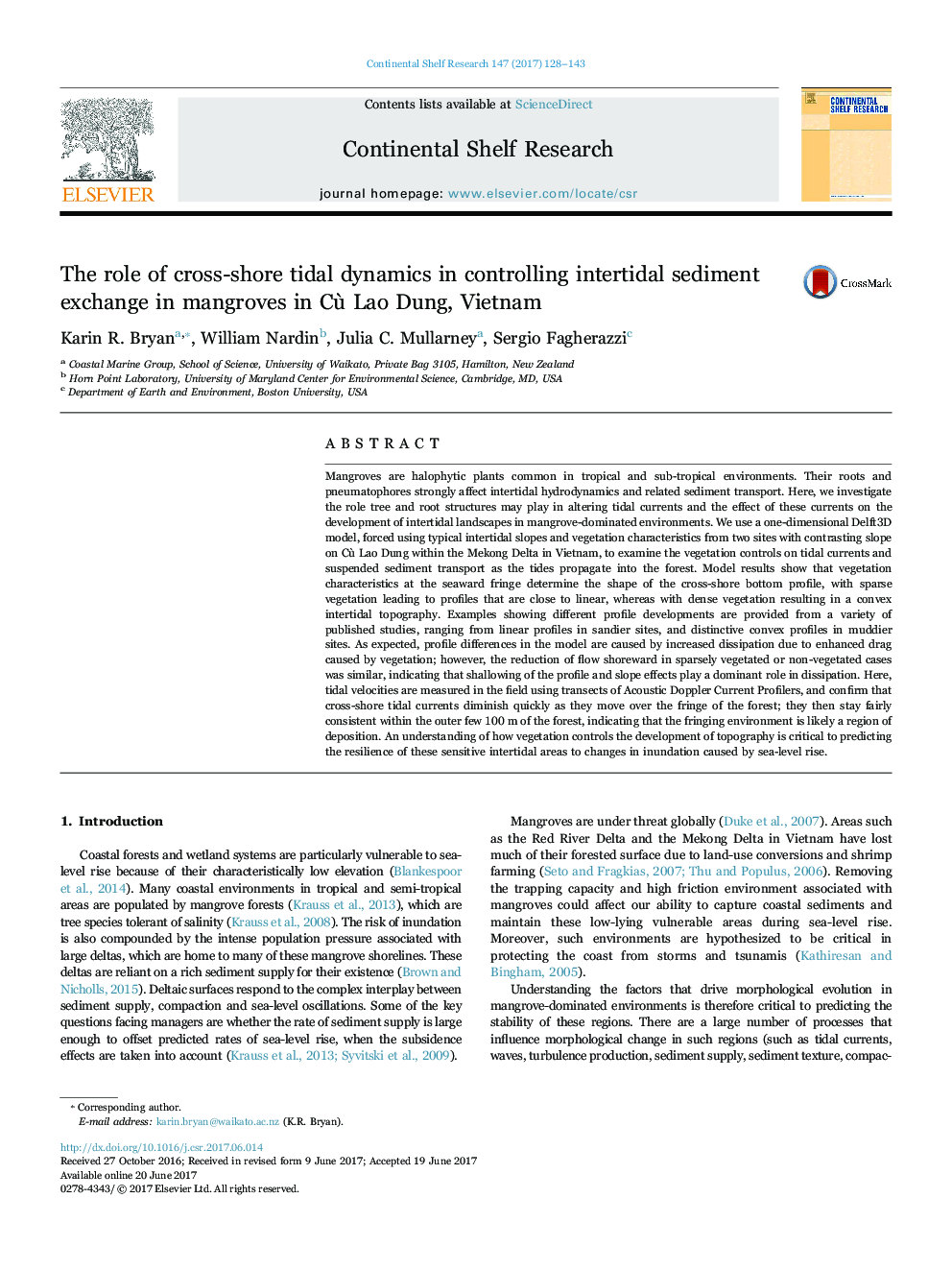| کد مقاله | کد نشریه | سال انتشار | مقاله انگلیسی | نسخه تمام متن |
|---|---|---|---|---|
| 5764370 | 1626066 | 2017 | 16 صفحه PDF | دانلود رایگان |

- A 1D numerical model shows the role of feedbacks in the development of intertidal areas in mangrove dominant coasts.
- Denser vegetation causes the reduction in tidal currents and the evolution of a more convex profile.
- The increase in friction associated with the reduction in water depth plays a greater role in reducing current than the growth of vegetation within the forested area.
Mangroves are halophytic plants common in tropical and sub-tropical environments. Their roots and pneumatophores strongly affect intertidal hydrodynamics and related sediment transport. Here, we investigate the role tree and root structures may play in altering tidal currents and the effect of these currents on the development of intertidal landscapes in mangrove-dominated environments. We use a one-dimensional Delft3D model, forced using typical intertidal slopes and vegetation characteristics from two sites with contrasting slope on Cù Lao Dung within the Mekong Delta in Vietnam, to examine the vegetation controls on tidal currents and suspended sediment transport as the tides propagate into the forest. Model results show that vegetation characteristics at the seaward fringe determine the shape of the cross-shore bottom profile, with sparse vegetation leading to profiles that are close to linear, whereas with dense vegetation resulting in a convex intertidal topography. Examples showing different profile developments are provided from a variety of published studies, ranging from linear profiles in sandier sites, and distinctive convex profiles in muddier sites. As expected, profile differences in the model are caused by increased dissipation due to enhanced drag caused by vegetation; however, the reduction of flow shoreward in sparsely vegetated or non-vegetated cases was similar, indicating that shallowing of the profile and slope effects play a dominant role in dissipation. Here, tidal velocities are measured in the field using transects of Acoustic Doppler Current Profilers, and confirm that cross-shore tidal currents diminish quickly as they move over the fringe of the forest; they then stay fairly consistent within the outer few 100 m of the forest, indicating that the fringing environment is likely a region of deposition. An understanding of how vegetation controls the development of topography is critical to predicting the resilience of these sensitive intertidal areas to changes in inundation caused by sea-level rise.
Journal: Continental Shelf Research - Volume 147, 1 September 2017, Pages 128-143